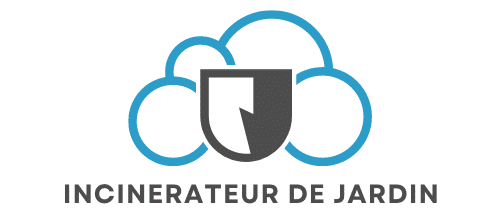What are the steps to develop a secure and efficient AI-powered risk management platform?

Artificial intelligence (AI) has revolutionized various industries by introducing innovative solutions and streamlining processes. In the realm of risk management, AI-powered platforms offer unparalleled efficiency and accuracy. However, developing a secure and efficient AI-powered risk management platform is a multifaceted endeavor that requires diligent planning and execution. This article breaks down the essential steps to build such a platform, ensuring data privacy, compliance, and security.
Identifying Potential Risks and Setting Objectives
Before embarking on the development of an AI-powered risk management platform, it is crucial to identify potential risks and set clear objectives. This initial phase is foundational as it shapes the entire project.
Dans le meme genre : How can AI be used to improve the precision of environmental monitoring systems?
Understanding Potential Risks
The first step involves a thorough risk assessment. Organizations must identify potential risks that could affect their operations, including those associated with third parties. In today's interconnected world, third-party risks are significant as they can compromise data privacy and security. Evaluating these risks comprehensively helps in formulating a robust risk management framework.
Setting Clear Objectives
Once potential risks are identified, it's essential to set clear objectives for the risk management platform. These objectives should be aligned with the organization’s goals and regulatory compliance requirements. For instance, enhancing real-time decision-making, ensuring data protection, and improving compliance with privacy laws could be key objectives.
Avez-vous vu cela : How can augmented reality be used to improve remote technical support for industrial equipment?
Frameworks like ISO 31000 can guide organizations in setting objectives and structuring their risk management systems effectively. By having clear goals, your organization can ensure that the AI-powered platform addresses the most pressing issues and delivers measurable benefits.
Designing a Privacy Program and Data Governance Structure
Data privacy and governance are pivotal in developing a secure AI-powered risk management platform. Without robust privacy programs and data governance, managing risks can become both challenging and ineffective.
Developing a Privacy Program
A comprehensive privacy program is essential to safeguard sensitive data within the organization. This program should include policies and procedures to ensure compliance with relevant privacy laws and regulations. It’s also important to integrate these policies into the AI system to prevent data breaches and unauthorized access.
Establishing Data Governance
Data governance involves the management of data availability, usability, integrity, and security within the organization. Implementing a strong data governance structure ensures that data is accurate, reliable, and accessible when needed. This is particularly important for AI systems that rely on vast amounts of data to function effectively.
Leveraging Tools and Software
Various tools and software solutions can aid in establishing a robust data governance framework. These tools facilitate the monitoring and management of data across the organization, ensuring compliance and security. By leveraging these technologies, organizations can maintain control over their data and mitigate potential risks.
Implementing AI and Machine Learning Technologies
AI and machine learning (ML) technologies form the core of an AI-powered risk management platform. These technologies enable the system to analyze vast amounts of data, identify patterns, and make informed decisions in real-time.
Integrating AI and ML Algorithms
Integrating AI and ML algorithms into the risk management platform is a critical step. These algorithms should be tailored to address the specific risks identified during the initial risk assessment phase. By training the AI models on relevant data, the platform can predict potential risks and provide actionable insights.
Ensuring Real-Time Capabilities
Real-time capabilities are essential for effective risk management. AI-powered platforms must be capable of processing data and making decisions instantaneously. This enables organizations to respond to emerging threats promptly, minimizing potential damage.
Utilizing Machine Learning for Continuous Improvement
Machine learning allows the platform to continuously improve its performance. By analyzing historical data and learning from past incidents, the AI system can enhance its predictive accuracy and adapt to new risks. This continuous improvement is vital for maintaining the platform’s effectiveness over time.
Ensuring Compliance with Privacy Laws and Regulations
Compliance with privacy laws and regulations is a non-negotiable aspect of developing an AI-powered risk management platform. Failure to comply can result in significant penalties and damage to the organization’s reputation.
Understanding Regulatory Requirements
Organizations need to be well-versed in the regulatory landscape governing data privacy and security. This includes laws such as the General Data Protection Regulation (GDPR), the California Consumer Privacy Act (CCPA), and other relevant regulations. Understanding these requirements is essential to ensure the platform’s compliance.
Implementing Compliance Measures
To ensure compliance, organizations must implement measures to protect data and maintain transparency. This might involve anonymizing data, securing data storage, and conducting regular audits. Additionally, organizations should establish a compliance team to oversee and enforce these measures.
Leveraging Compliance Tools
There are various tools available to assist organizations in maintaining compliance. These tools can automate compliance checks, monitor data usage, and generate reports to demonstrate adherence to regulatory requirements. By utilizing these tools, organizations can streamline their compliance efforts and reduce the risk of non-compliance.
Establishing a Comprehensive Risk Management Framework
A comprehensive risk management framework is integral to the success of the AI-powered platform. This framework should encompass all aspects of risk management, from initial risk identification to ongoing monitoring and mitigation.
Developing a Risk Management Strategy
The risk management strategy should outline how the organization plans to address identified risks. This includes defining risk tolerance levels, establishing response protocols, and setting up communication channels for reporting and addressing risks. A well-defined strategy provides a clear roadmap for managing risks effectively.
Implementing Risk Management Systems
Implementing robust risk management systems is essential for executing the strategy. These systems should be equipped with tools to monitor risks in real-time, analyze potential impacts, and initiate appropriate responses. By integrating these systems with the AI-powered platform, organizations can enhance their risk management capabilities.
Monitoring and Reviewing the Framework
Continuous monitoring and review are crucial to ensure the framework’s effectiveness. Organizations should regularly evaluate their risk management practices and make adjustments as needed. This involves analyzing performance metrics, conducting risk assessments, and updating the framework to address evolving risks.
Developing a secure and efficient AI-powered risk management platform involves a series of well-structured steps. By identifying potential risks, setting clear objectives, designing a privacy program, implementing AI technologies, ensuring compliance, and establishing a comprehensive risk management framework, organizations can build a platform that enhances their risk management capabilities. This process not only safeguards data privacy and security but also enables organizations to make informed decisions in real-time, thereby mitigating potential risks and ensuring long-term success.
